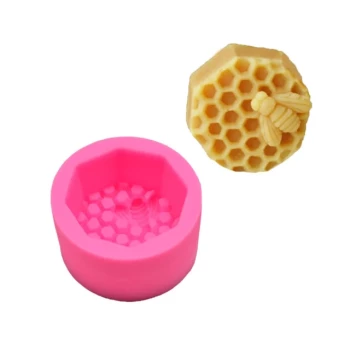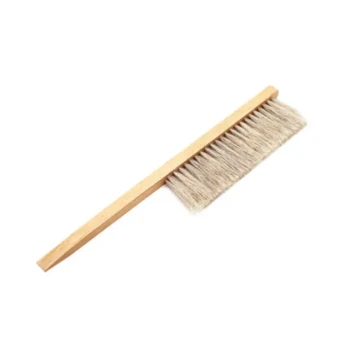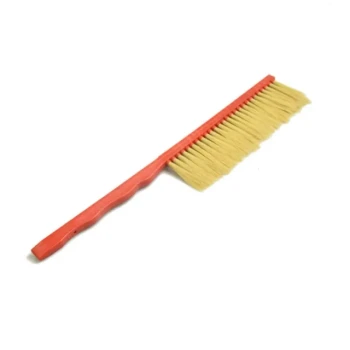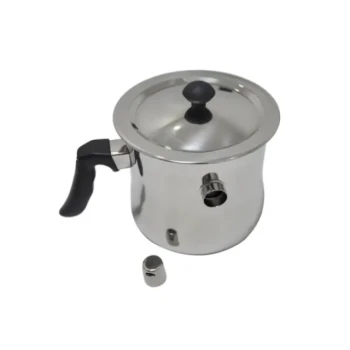At its core, the honeycomb serves two critical functions. It is the hive's nursery, where bees raise their young, and it is the hive's pantry, where they store honey and pollen for food. This dual-purpose structure is absolutely essential for the survival and continuation of the colony.
The honeycomb is a masterpiece of biological engineering, designed for maximum storage capacity and structural integrity using the absolute minimum amount of material. Its purpose is not just to hold things, but to do so with unparalleled efficiency.
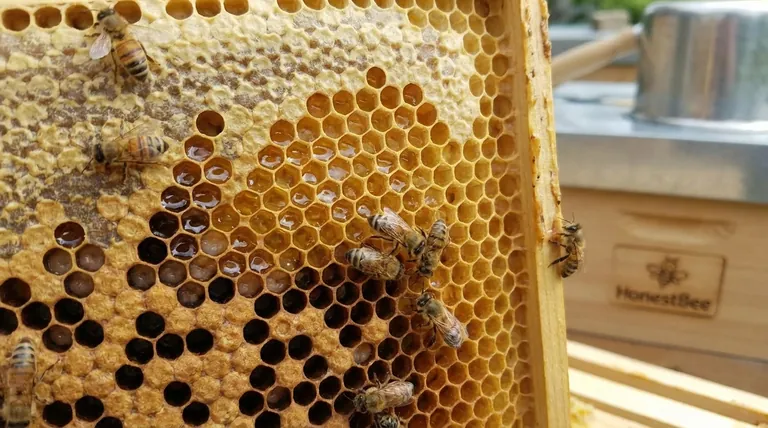
The Dual-Function Core of the Hive
The entire life of a bee colony revolves around the functions enabled by the honeycomb. It is far more than just a wax structure; it is the heart of the hive.
A Nursery for the Next Generation
The queen bee lays her eggs directly into the individual hexagonal cells. These cells serve as protected chambers where the larvae hatch, are fed by worker bees, and develop into pupae before emerging as adult bees.
A Pantry for Sustenance
Worker bees also use the cells to store nectar, which they transform into honey. They also pack pollen into cells. This stored food is the colony's energy source, critical for surviving winter or periods when flowers are not in bloom.
The Engineering Genius of the Hexagon
The choice of a hexagon is not random; it is a mathematically perfect solution to a complex engineering problem: creating the most storage with the least amount of building material.
Maximum Strength, Minimum Wax
Bees produce wax from glands on their abdomen, a process that consumes significant energy (honey). The hexagonal shape allows the cells to share walls, drastically reducing the total amount of wax needed compared to other shapes.
No Wasted Space
Hexagons are one of the few geometric shapes that tessellate, meaning they fit together perfectly without any gaps. This ensures that every bit of space within the hive is used for storage or raising young, leaving no volume wasted.
Unmatched Structural Integrity
The interlocking pattern of hexagons creates a remarkably strong and stable structure. This allows the comb to hold the significant weight of honey and the developing brood without collapsing, all while being constructed from a relatively fragile material.
The Inefficiency of Other Shapes
To fully appreciate the hexagon, it's helpful to understand why other simple shapes are less effective for a honeycomb.
The Weakness of Circles
While a circle is the most efficient shape for holding the most area with the least perimeter, circles do not fit together perfectly. The gaps between them would create significant wasted space and require bees to fill them in with extra wax.
The Material Cost of Squares
Squares tessellate perfectly like hexagons, eliminating wasted space. However, for a given area, a hexagon has a shorter perimeter than a square. This means a hexagonal cell requires less wax to build than a square cell of the same volume, making it the superior choice for resource conservation.
Applying the Honeycomb's Principles
Understanding the purpose of the honeycomb provides a clear lesson in efficiency and design.
- If your primary focus is biology: The honeycomb is a perfect solution for reproduction and food security, enabling the colony to thrive as a superorganism.
- If your primary focus is engineering: The honeycomb is the optimal design for maximizing storage volume and structural strength while minimizing material cost.
Ultimately, the honeycomb demonstrates how natural selection drives solutions that are both simple and profoundly intelligent.
Summary Table:
| Function | Key Feature | Benefit to the Colony |
|---|---|---|
| Nursery | Protected hexagonal cells | Safe development for larvae and pupae |
| Pantry | Sealed cells for storage | Food security (honey & pollen) for survival |
| Structure | Hexagonal, tessellating pattern | Maximum strength and storage with minimal wax |
Elevate Your Apiary's Efficiency with HONESTBEE
The honeycomb is nature's ultimate model for efficient design and robust structure. At HONESTBEE, we apply these principles of strength and efficiency to our premium beekeeping supplies and equipment. We help commercial apiaries and distributors maximize their productivity and protect their valuable colonies.
Contact HONESTBEE today to discuss your wholesale needs and discover how our equipment can build a stronger foundation for your business.
Visual Guide
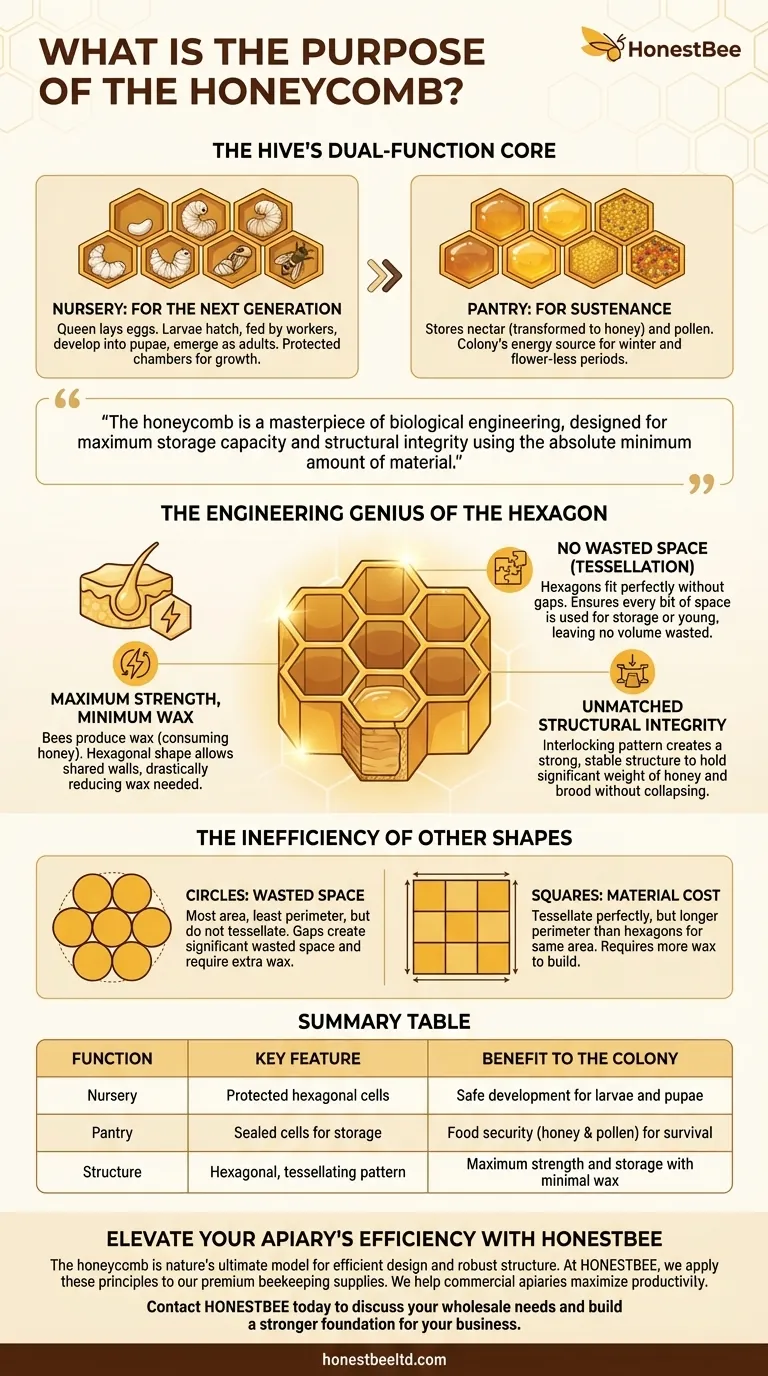
Related Products
- Electric Honey Press Machine for Squeezing Honey Comb Press Equipment
- Electric Flatting and Embossing Machine with Tray for Beekeeping
- Hexagonal Bee Honeycomb Silicone Soap Mold by HONESTBEE
- Wooden Bee Brush with Double-Row Horsehair Bristles
- Easy Use Manual Stainless Steel Honey Press for Honey Comb
People Also Ask
- What are the benefits of using a honey press for Warré or Top Bar beehives? Maximize Your Natural Harvest
- How does using a honey press affect honeycomb reuse? It Destroys Comb but Captures Unique Honey & Wax
- How does a honey press work? A Guide to Simple, High-Yield Honey Extraction
- What are the reasons for choosing a honey press over a dedicated honey extractor? Maximize Disease Control and Natural Beekeeping
- What are the unique characteristics of honey presses? Maximize Honey Yield for Small-Scale Beekeeping


